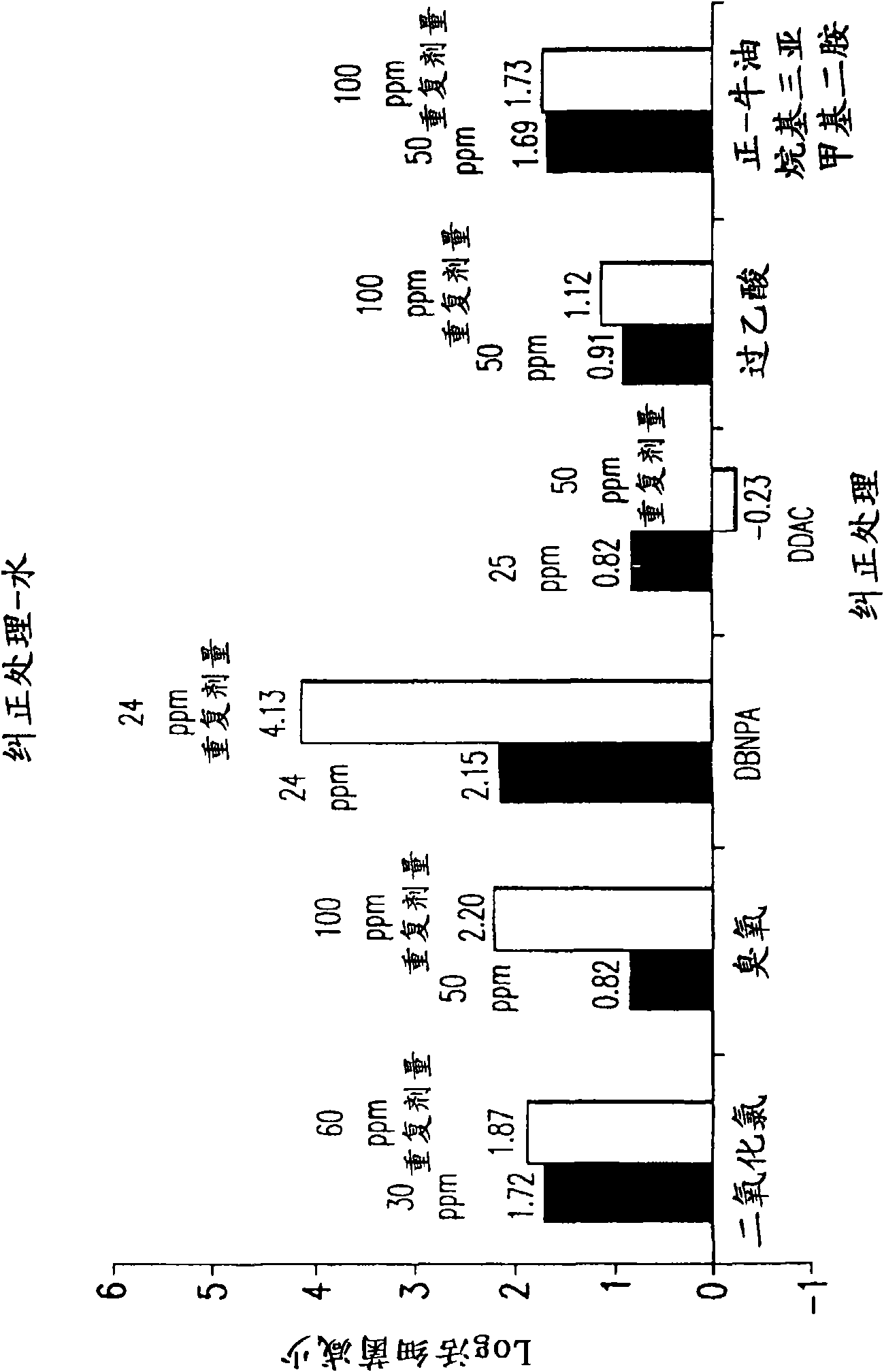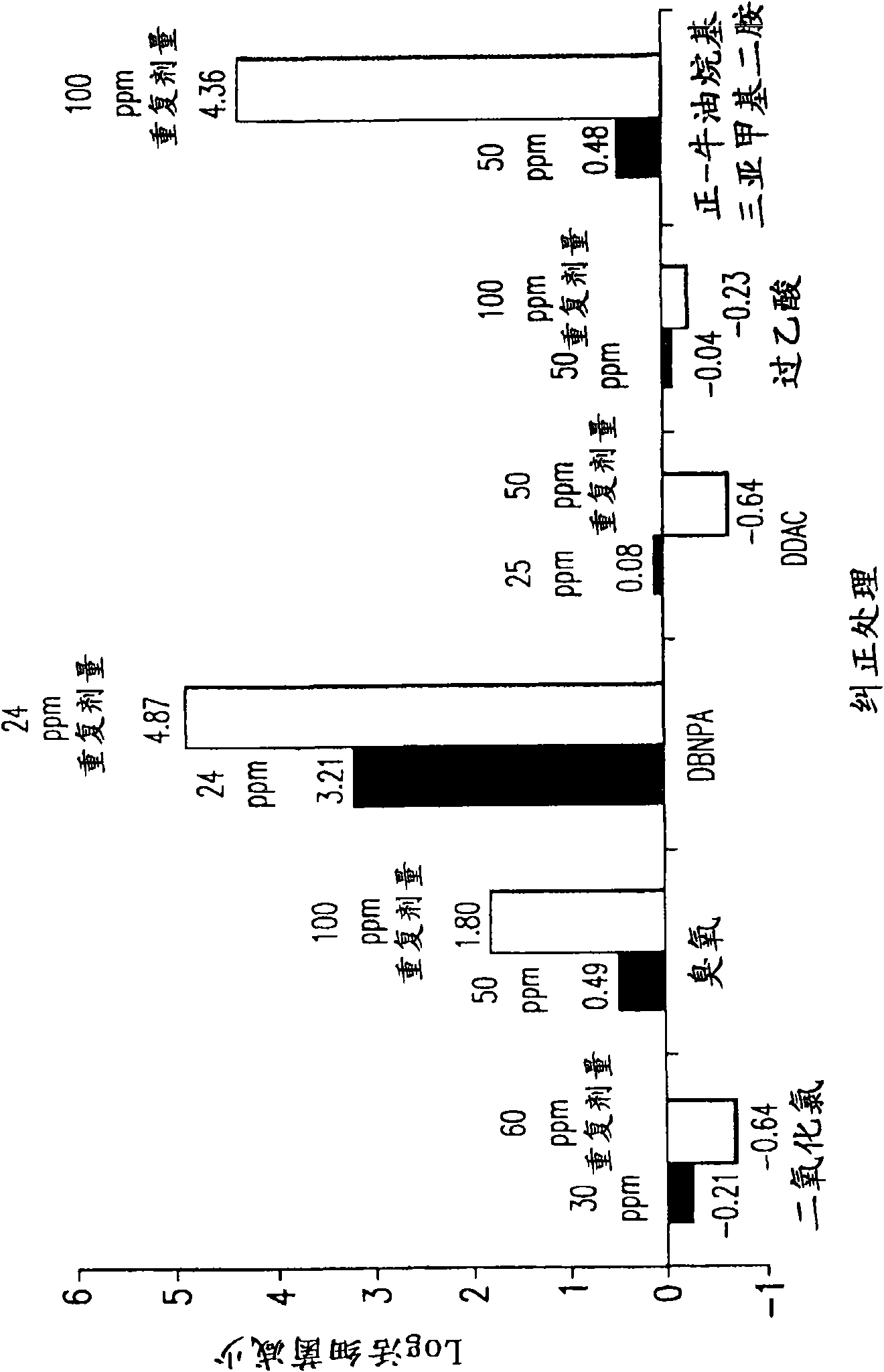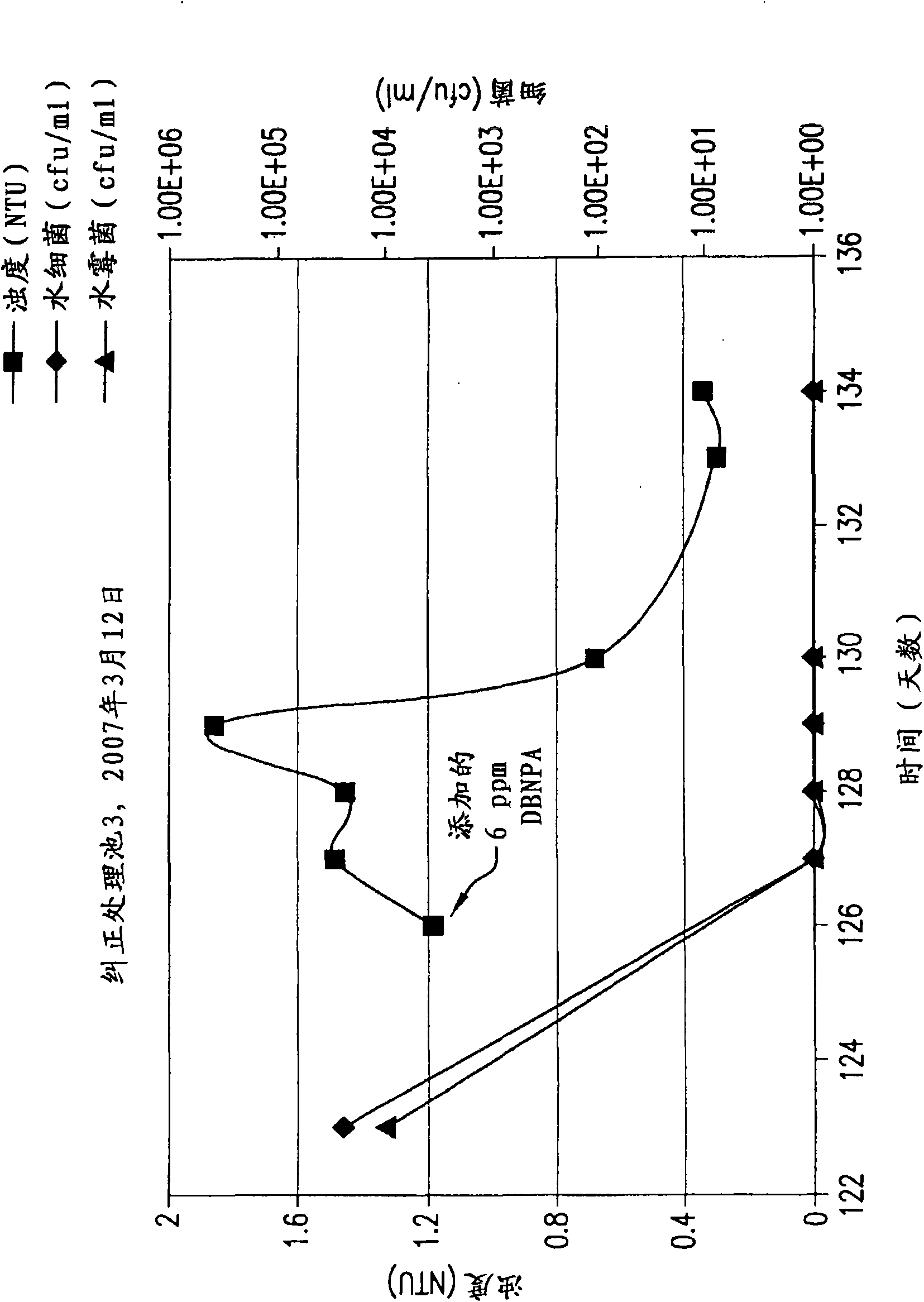Biocidal composition and method for treating recirculating water systems
A technology of circulating water system and treatment cycle, applied in chemistry and other directions, can solve problems such as unsatisfactory oxidants
- Summary
- Abstract
- Description
- Claims
- Application Information
AI Technical Summary
Problems solved by technology
Method used
Image
Examples
preparation example Construction
[0054] This cyanoguanidine group can be hydrolyzed during the preparation of linear polymeric biguanides, resulting in guanidine end groups. These end groups can be the same or different on each polymer chain.
[0055] Diamine H is used in the preparation of polymeric biguanides as described above 2 N-Y-NH 2 Can include a small portion of primary amines R-NH 2 , wherein R represents an alkyl group containing 1-18 carbon atoms. Primary amines function as chain terminators and thus can terminate one or both ends of the polymeric biguanide polymer chain with -NHR groups. These -NHR chain terminated polymeric biguanides can also be used.
[0056] Polymeric biguanides readily form salts with inorganic and organic acids. Preferred polymeric biguanide salts are water soluble. When the polymeric biguanide is represented by the compound of formula (2) in free base form, the preferred water soluble salt is digluconate. When the polymeric biguanide is represented by the compound o...
Embodiment 1
[0073] Example 1: Correction
[0074] Fungal isolates of common fungi found in swimming pools such as Paecilomyceslilacinus and Trichoderma spp. and bacterial isolates also common to swimming pools such as Alcaligenes (Alcaligenes) species and Pseudomonas (Sphingomonas) species are used to build biofilms, which are treated with biocides using the following methods:
[0075] Prepared in 10% R2A Broth 3.65 x 10 4 / ml concentration of fungal spore mixture suspension. Aliquots of this spore suspension were added to each well of the 96-well plate except column 12. Plates were incubated at 28°C for 18 hours. Additionally, prepared in 20% R2A broth 2.34 x 10 5 / ml concentration of the suspension of the bacterial mixture. Aliquots of this bacterial suspension were added to wells of a 96-well plate in which fungal spores were placed. Plates were incubated at 28°C for 24 hours.
[0076] In a new 96-well plate, add 6 ppm PHMB solution to each well except columns 1 and 12. Add a s...
Embodiment 2
[0086] Example 2: Prevention - Secondary Screening
[0087] The secondary screening method is based on a laboratory grade model of a swimming pool. A volume (800 ml) of synthetic swimming pool water (calcium chloride dihydrate and sodium bicarbonate solution) was cascaded through the swimming pool filter sand by means of a peristaltic pump. The water temperature for each system was maintained at 80-90°F. The purpose of this experiment was to evaluate the durability or ability of a single biocide or combination thereof to prevent microbial colonization in water and sand filter media, thereby preventing biofilm formation in the system. Biocide candidate performance was determined in terms of the number of days water clarity maintained below 1.0 NTU and the number of bacterial and fungal counts above this turbidity reading. It has been confirmed that at turbidity above 1.0 NTU, there is a large population of bacteria and fungi in water and sand. In addition, visible biofilms w...
PUM
 Login to View More
Login to View More Abstract
Description
Claims
Application Information
 Login to View More
Login to View More - R&D
- Intellectual Property
- Life Sciences
- Materials
- Tech Scout
- Unparalleled Data Quality
- Higher Quality Content
- 60% Fewer Hallucinations
Browse by: Latest US Patents, China's latest patents, Technical Efficacy Thesaurus, Application Domain, Technology Topic, Popular Technical Reports.
© 2025 PatSnap. All rights reserved.Legal|Privacy policy|Modern Slavery Act Transparency Statement|Sitemap|About US| Contact US: help@patsnap.com



